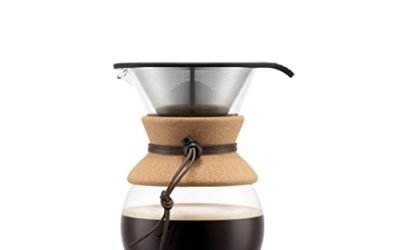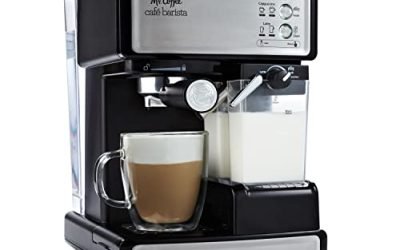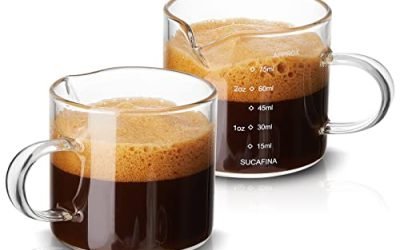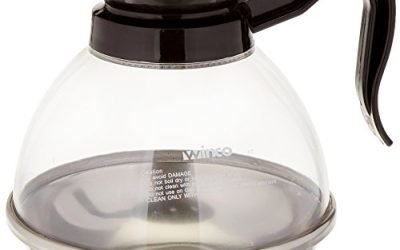Hey there, coffee lover! Are you tired of your morning cup of joe tasting weak and lackluster? Do you long for that robust and bold flavor that you usually find at your favorite café? Well, fear not, because in this blog post, we’ve got you covered. We understand the frustration of trying to achieve that perfect, strong brew at home, and we’re here to help. Whether you’re just starting out on your coffee brewing journey or you’re a seasoned pro looking to up your game, we’ve got some tips and techniques that will take your home brewing skills to new heights. So grab your favorite mug, put on your barista hat, and let’s dive in!
Brew like a pro with these top picks for home coffee lovers
Understanding Coffee to Water Ratio
Welcome to our guide on understanding the coffee to water ratio! Whether you’re a coffee aficionado or just starting your brewing journey, getting the perfect balance between coffee and water is essential for a great-tasting cup of joe. In this section, we will delve into the importance of the coffee to water ratio, how to measure it accurately, and provide recommendations for different brewing methods.
Why Does Coffee to Water Ratio Matter?
Getting the coffee to water ratio right is crucial because it directly affects the flavor, strength, and overall quality of your brew. The ratio determines the extraction level of the coffee, which influences its taste profile. If you use too little coffee, your brew will be weak and lack flavor. On the other hand, using too much coffee can result in an overpowering, bitter taste.
Measuring the Coffee and Water
To achieve the perfect ratio, you need to accurately measure both the coffee and water. Here’s how to do it:
Coffee Measurement
- Use a kitchen scale to weigh your coffee beans or pre-ground coffee. This ensures precision and consistency.
- The standard coffee to water ratio is 1:15, which means one part coffee to fifteen parts water. However, you can adjust this ratio to suit your taste preferences.
Water Measurement
- Measure the water using a liquid measuring cup. Be sure to account for any water loss due to evaporation during the brewing process.
- If you don’t have a scale, you can also use a tablespoon to measure your coffee. A general guideline is to use one tablespoon of coffee for every six ounces of water.
Coffee to Water Ratio for Different Brewing Methods
The ideal coffee to water ratio can vary depending on the brewing method you choose. Here are some recommendations for popular brewing methods:
Pour Over
- Coffee to Water Ratio: 1:15
- Example: For 30 grams of coffee, you’ll need approximately 450 grams (or 450 mL) of water.
French Press
- Coffee to Water Ratio: 1:12
- Example: For 30 grams of coffee, you’ll need approximately 360 grams (or 360 mL) of water.
Espresso
- Coffee to Water Ratio: 1:2
- Example: For 18 grams of coffee, you’ll need approximately 36 grams (or 36 mL) of water.
AeroPress
- Coffee to Water Ratio: 1:17
- Example: For 15 grams of coffee, you’ll need approximately 255 grams (or 255 mL) of water.
Remember, these ratios are just starting points, and you can adjust them based on your taste preferences. Experimentation is key!
Choosing the Right Coffee Beans
When it comes to brewing a delicious cup of coffee, selecting the right type and quality of coffee beans is essential. The beans you choose can greatly affect the strength and flavor of your brew. In this guide, we’ll explore the different characteristics to look for when selecting coffee beans and provide recommendations for beans that are known for producing a strong cup of coffee.
Understanding Coffee Bean Characteristics
Before diving into specific recommendations, it’s important to understand the key characteristics that can influence the strength and taste of your coffee. Here are a few factors to consider:
1. Roast Level
The roast level of coffee beans can greatly impact the flavor profile of your brew. Lighter roasts tend to have a brighter and more acidic taste, while darker roasts offer a bolder and more robust flavor. If you prefer a stronger cup of coffee, darker roasts are usually the way to go.
2. Origin
Coffee beans can be sourced from various regions around the world, each with its unique flavor profile. For example, beans from Central America often have a fruity and bright taste, while those from Africa may exhibit floral or citrus notes. Understanding the origin of the beans can help you choose flavors that align with your preferences.
3. Bean Variety
Different coffee bean varieties, such as Arabica and Robusta, have distinct characteristics. Arabica beans are known for their complex flavors and acidity, while Robusta beans offer a stronger and more bitter taste. If you’re looking for a strong cup of coffee, Robusta beans might be a good choice.
Recommendations for Strong Coffee Beans
Now that we have a better understanding of coffee bean characteristics, let’s dive into some recommendations for beans that are known for producing a strong cup of coffee. Here are a few options to consider:
1. Death Wish Coffee
Death Wish Coffee is renowned for its strong caffeine content and bold flavor. It’s made from a blend of Arabica and Robusta beans, providing a powerful kick that coffee enthusiasts crave. If you’re someone who needs that extra jolt in the morning, Death Wish Coffee might be the perfect choice.
2. Peet’s Coffee Major Dickason’s Blend
Peet’s Coffee Major Dickason’s Blend is a dark roast that delivers a rich and full-bodied cup of coffee. This blend combines beans from various regions, resulting in a complex and strong flavor profile. It’s an excellent option for those who enjoy a robust and intense brew.
3. Starbucks French Roast
Starbucks French Roast is a popular choice for coffee lovers seeking a strong and smoky flavor. This dark roast has a deep, caramelized taste that pairs well with milk or cream. If you’re a fan of bold and powerful coffee, the Starbucks French Roast won’t disappoint.
Optimizing Extraction Time
When it comes to brewing coffee, extraction time plays a crucial role in determining the strength and flavor of your cup. Whether you prefer a bold and robust brew or a smoother and milder taste, understanding how to optimize extraction time is key. In this blog section, we will delve into the importance of extraction time, guide you on adjusting brewing time to suit your preference, and provide tips for avoiding over-extraction or under-extraction.
Importance of Extraction Time
Extraction time refers to the duration during which hot water comes into contact with coffee grounds, extracting the desired flavors and compounds. The longer the extraction time, the more soluble compounds are extracted, resulting in a stronger brew. Conversely, shorter extraction times produce a milder cup.
Achieving the optimal extraction time is crucial because it directly impacts the balance of flavors in your coffee. If the extraction time is too short, you may end up with an under-extracted brew that tastes weak and lacks depth. On the other hand, if the extraction time is too long, over-extraction can occur, leading to a bitter and unpleasant flavor.
Adjusting Brewing Time to Preference
The ideal extraction time varies depending on personal taste preferences and the brewing method used. Here are some general guidelines to help you adjust brewing time to achieve your desired strength:
- Experiment with Different Brewing Methods: Various brewing methods, such as pour-over, French press, or espresso machines, have different extraction times due to factors like water flow rate and coffee-to-water ratio. Familiarize yourself with the recommended extraction times for your chosen method.
- Grind Size: Coarser grinds generally require longer extraction times, while finer grinds extract more quickly. Adjust your grind size accordingly to control the extraction time. For example, if using a Ninja Coffee Maker XL Pro with a coarse grind, you may need to extend the brewing time to achieve a strong cup.
- Taste Testing: Regularly taste your coffee during the brewing process to assess the flavor profile. This will help you determine when to stop the extraction to achieve the desired strength. Remember, practice makes perfect, and refining your technique takes time.
Avoiding Over-Extraction or Under-Extraction
To avoid the pitfalls of over-extraction or under-extraction, consider the following tips:
- Monitoring Brew Time: Keep track of the brewing time using a timer or the built-in timer on your coffee maker. This will help you establish a baseline and make adjustments as needed.
- Adjusting Water Temperature: Higher water temperatures generally result in faster extraction, while lower temperatures slow it down. Experiment with water temperatures within the recommended range for your brewing method to control extraction time.
- Consistency in Coffee-to-Water Ratio: Ensure you maintain a consistent coffee-to-water ratio for each brew. Changing the ratio can affect extraction time and ultimately impact the strength of your coffee.
- Cleaning and Maintenance: Regularly clean your brewing equipment, including the grinder and coffee maker, to prevent any buildup that may affect extraction time. A well-maintained machine can contribute to consistent brewing results.
By following these guidelines, you can optimize extraction time to achieve the perfect balance of flavors in your cup of coffee. Remember, everyone’s taste preferences differ, so don’t be afraid to experiment and tailor your brewing technique to suit your individual palate.
So go ahead, grab your Salomon Speedcross 5 Running Shoes and start brewing that perfect cup of coffee with the confidence that comes from understanding the importance of extraction time. Happy brewing!
Experimenting with Grind Size
When it comes to brewing a perfect cup of coffee, many factors come into play, and one of the most important is the grind size. The grind size has a significant impact on the overall strength and flavor profile of your coffee. In this article, we will explore the relationship between grind size and strength, guide you through different grind sizes for various brewing methods, and help you find the perfect grind size to achieve a stronger cup of coffee.
Understanding the Impact of Grind Size
The grind size refers to the coarseness or fineness of the coffee grounds. It determines how fast water can extract flavors from the coffee during brewing. A finer grind size increases the surface area of the coffee, allowing for quicker extraction, resulting in a stronger cup. Conversely, a coarser grind size slows down the extraction process, producing a milder and less intense brew.
Choosing the right grind size is crucial to achieving the desired strength and flavor. Let’s explore the different grind sizes for popular brewing methods:
1. Espresso
Espresso requires a very fine grind size to achieve the intense, concentrated flavor it is known for. The fine grind allows for a high-pressure extraction process in espresso machines, extracting the rich oils and flavors from the coffee beans. Some popular espresso machines that work well with a fine grind include:
- Breville Barista Express
- De’Longhi Magnifica
- Ninja Coffee Maker XL Pro
2. Pour Over
Pour over brewing methods, such as the Hario V60 or Chemex, benefit from a medium-fine grind size. This grind size allows for a balanced extraction, resulting in a clean and flavorful cup of coffee. Some popular pour-over devices that work well with a medium-fine grind include:
- Hario V60
- Chemex
- Kalita Wave
3. French Press
French press brewing requires a coarse grind size to prevent over-extraction and produce a full-bodied, robust cup of coffee. The coarse grind allows for a longer steeping time, resulting in a stronger and more flavorful brew. Some popular French press models that work well with a coarse grind include:
- Bodum Chambord French Press
- Frieling Stainless Steel French Press
- Espro P7 French Press
Finding Your Perfect Grind Size
Now that you understand the impact of grind size, how do you find the perfect one for your preferred brewing method? Here are some tips to help you:
- Experimentation is key: Start with the recommended grind size for your brewing method, and then make small adjustments to see how it affects the strength and flavor of your coffee. Keep a record of your experiments to track your preferences.
- Consider the extraction time: If your coffee is too weak, try a finer grind size to increase the extraction time. Conversely, if your coffee is too strong or bitter, try a coarser grind size to shorten the extraction time.
- Invest in a quality grinder: A good grinder with adjustable settings will give you more control over the grind size. This will allow you to fine-tune your coffee brewing process and achieve consistent results.
- Take note of your coffee beans: Different coffee beans have different densities, origins, and roast levels, which can influence the ideal grind size. Experimenting with grind sizes while using different beans can help you discover the perfect balance for your taste preferences.
Remember, finding the perfect grind size is a personal journey that requires experimentation and exploration. By understanding the impact of grind size and following these tips, you’ll be well on your way to brewing a stronger and more flavorful cup of coffee.
So, grab your favorite coffee beans, adjust your grind size, and enjoy the wonderful world of coffee customization!
Wrapping it up: Tips for Brewing a Better Cup of Joe
So there you have it! By taking into account the coffee to water ratio, selecting the perfect coffee beans, finding the right extraction time, and playing around with the grind size, you’ll be well on your way to brewing a stronger cup of coffee. With these tips and techniques, you can savor a bold and delicious cup of coffee right in the comfort of your own home. Cheers to a stronger brew!














I would love to see an article about different brewing methods and how they affect the strength of the coffee. For example, French press vs pour over.